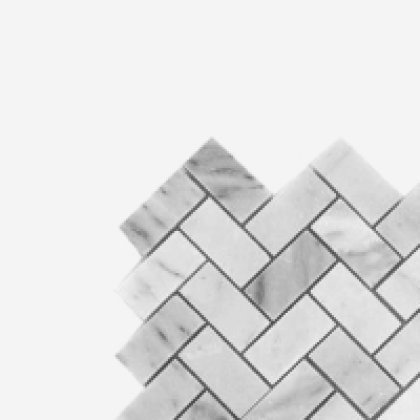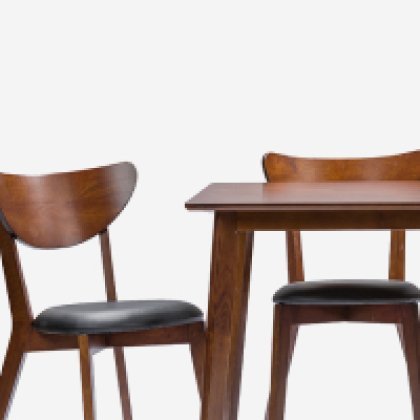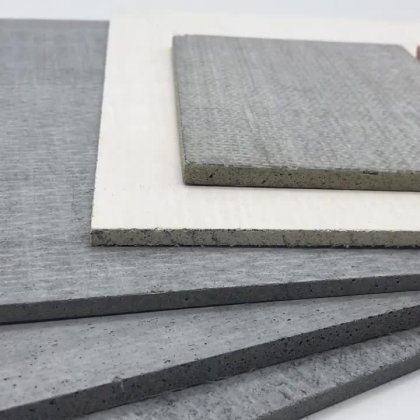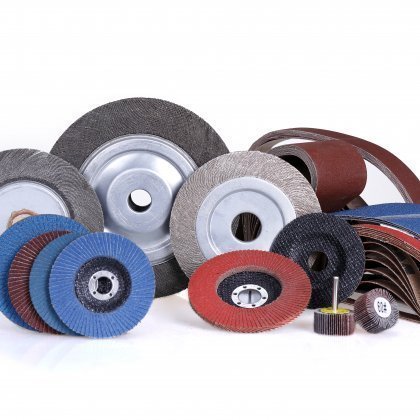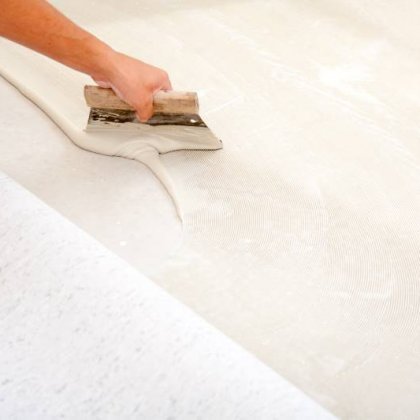
Marble begins as sediment — animal skeletons, shells, plant matter, and silt — at the bottom of bodies of water. After millions of years, it solidifies into stone. Since its main component is calcium, it can be attacked by acids such as vinegar and citrus fruits. Marble can exhibit a wide variety of textures, colors, and depths depending on the temperature and pressure at which it was formed, as well as the minerals and moisture present.
Marble is a softer stone than granite, so cutting directly onto marble will result in scratches. Using coasters, cutting boards, and placemats under ceramics and china will help protect countertops from most scratches. Marble is also sensitive to acids and when they come in contact with the marble slabs they will be etched. Etching is an instantaneous chemical reaction, so take extra care not to have acidic items on marble slabs. Acidic products include citrus fruits, cosmetics, tomatoes, wine and other alcohols. Clean up all spills immediately and only use cleaning products intended for use on marble.
Marble is prone to all kinds of stains, including water stains. Therefore, always use coasters and placemats under all glasses and dishes. To avoid staining always make sure your countertops are properly sealed and avoid letting any spillage sit on the countertop for any length of time. Stains can be removed from marble countertops with an poultice.
Marble can also burn, so always use coasters and heating pads under any hot surface to protect the stone.
Granite-Tops is experienced in manufacturing all types of natural stone including marble. Marble is an exceptionally beautiful natural stone that is elegant and distinctive. It is often characterized by its very unique colors. Visit our current marble inventory online.
Cleaning marble countertops
For daily cleaning, use a mild dish soap such as Ivory®, warm water and a soft, clean cloth. You can also use any water-based spray cleaner such as B. Windex® with clear vinegar formula or Natural Stone Cleaner 409® (as recommended by the Marble Institute of America). If a film, stain, or streak forms, use vinegar diluted with water (1 part vinegar to 3 parts water) and a soft, clean cloth to remove it.
Sealing marble countertops
Your countertops were sealed prior to installation. It is recommended to seal the marble slab at least once a year. Depending on the porosity of the stone and your daily use of the countertops, some marble slabs may need sealing more frequently.
To determine if your countertop needs resealing, do a "water test." Put some water on your stone. If the water seeps into the stone within 15-20 minutes, it's time to reseal it. Wait for the water stain to evaporate before sealing it again.
Some granite and most marble, limestone and travertine surfaces require immediate or multiple applications of sealer by the homeowner even though it has been sealed prior to installation. The natural porosity of these stones and their use in your home requires a stronger initial seal.
The sealer acts as a stain inhibitor and prevents most stains and dirt from being absorbed into the surface, but it is NOT a guarantee against stains. To seal your granite countertops we recommend the Stone Tech Professional Care System available through Stone Countertop Outlet. Other stone sealers are available at any stone/tile retailer.
General sealing instructions (Always follow the instructions that came with your product.)
1. Make sure your countertops are clean and free of spills. Stains should be removed before sealing. You will need 3 clean, dry, soft cloths and stone sealer.
2. Pour a small amount of sealer, about the size of the bottom of a pop can, onto the countertop and spread evenly with a dry cloth. Pour more sealer onto the stone as you move onto other areas of the surface.
3. Allow the sealer to soak into the stone for at least 15-30 minutes. If the sealer is quickly absorbed by the stone, which is common with marble, limestone, travertine and onyx, repeat step 2.
4. Take another dry cloth and wipe away the excess sealant while it's still damp. If the seal is already dry, wear
 English
English



